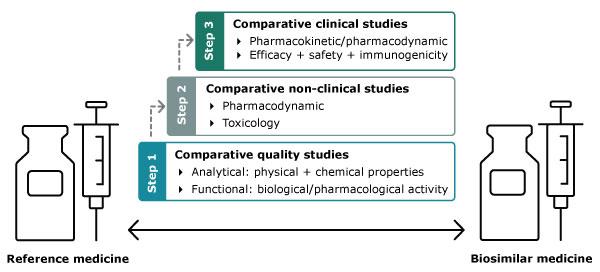Biosimilar medicines: marketing authorisation
A biosimilar is biological medicine highly similar to another already approved biological medicine in the European Union (EU), for which marketing exclusivity rights have expired. The European Medicines Agency (EMA) is responsible for evaluating the majority of applications to market biosimilar medicines before they can be approved and marketed in the EU.
HumanBiosimilarsRegulatory and procedural guidance
